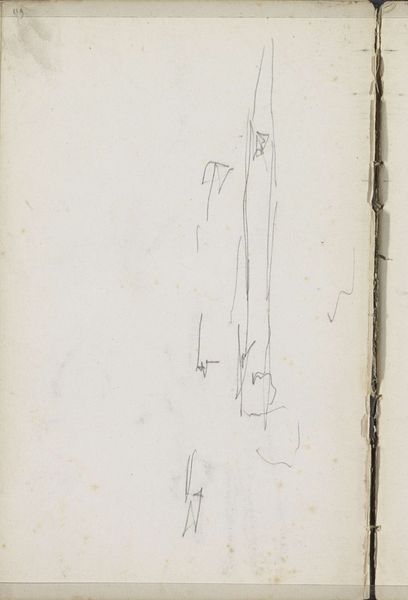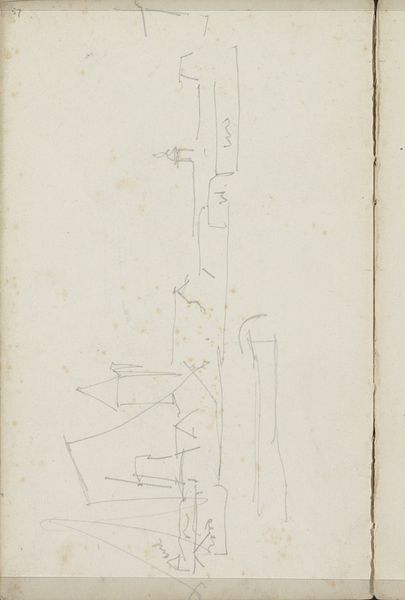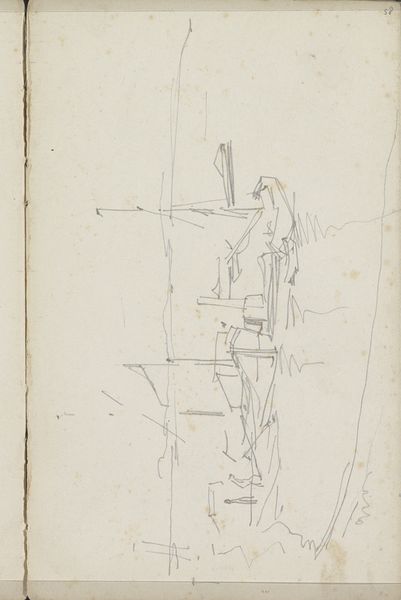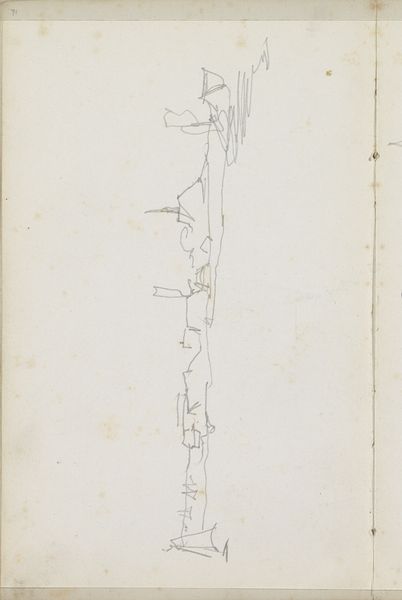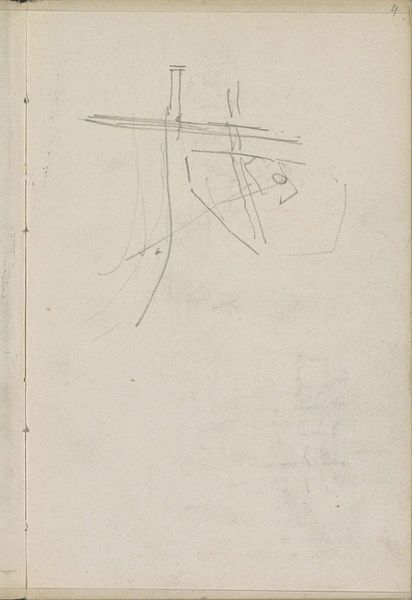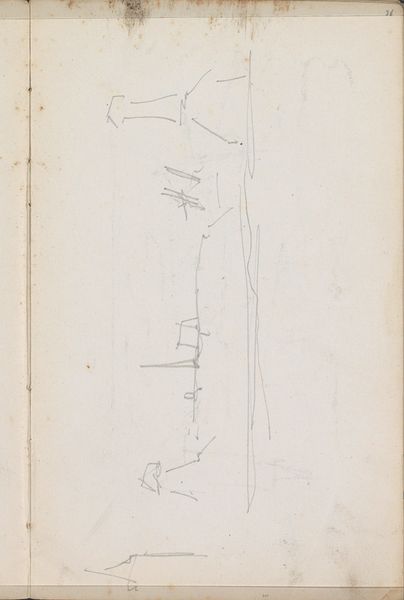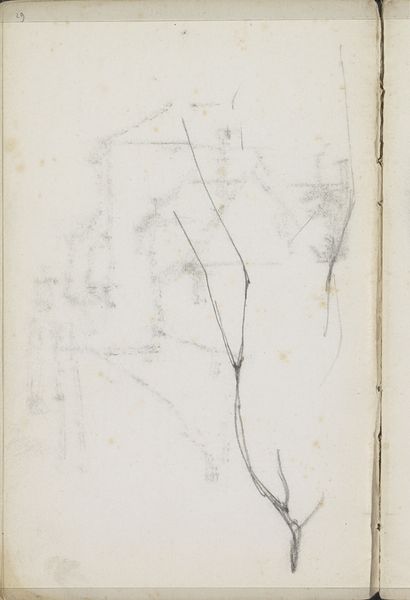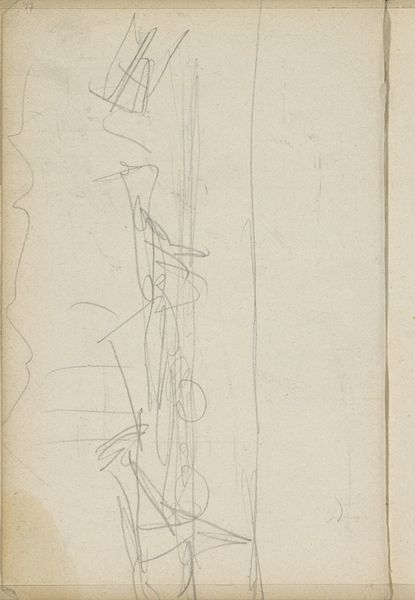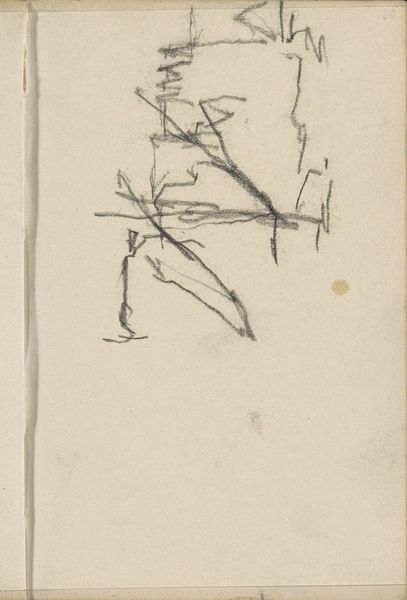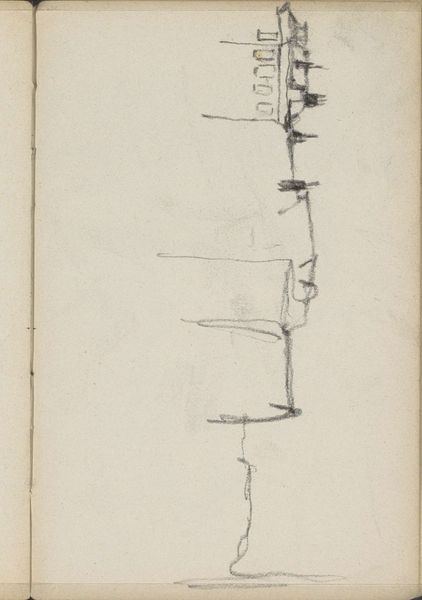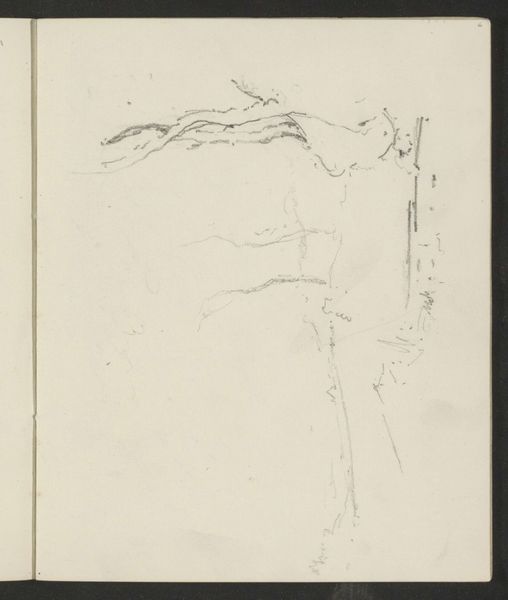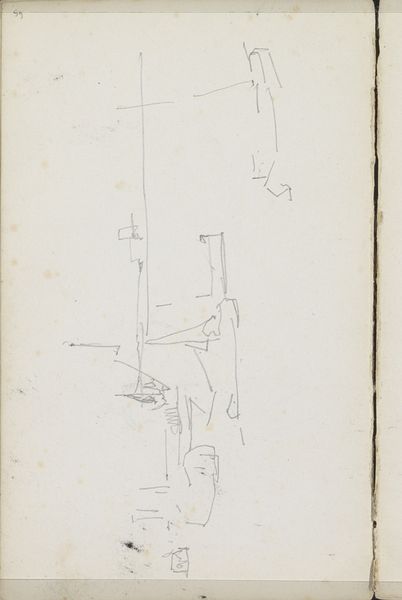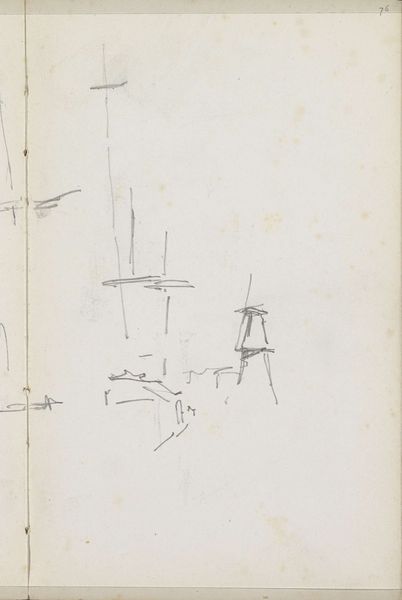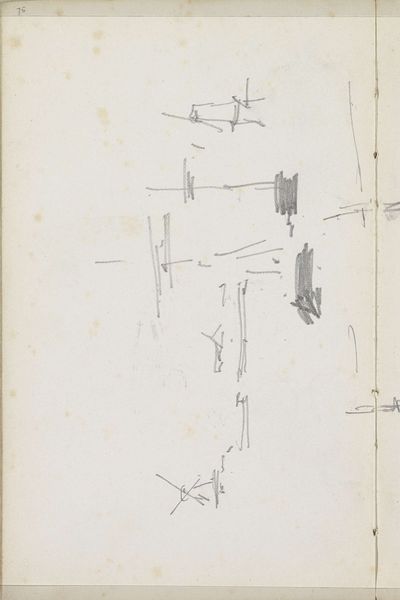
drawing, paper, pencil
#
drawing
#
impressionism
#
landscape
#
paper
#
form
#
pencil
#
abstraction
#
line
Copyright: Rijks Museum: Open Domain
Curator: Here at the Rijksmuseum, we have "Landscape with Two Windmills," a pencil drawing on paper by George Hendrik Breitner, created between 1880 and 1882. What's your initial reaction to this work? Editor: It strikes me as incredibly raw, almost urgent. The lines are so sparse, yet they evoke a surprising sense of space. The lack of detail makes it feel ephemeral, like a fleeting memory of a landscape rather than a concrete depiction. Curator: Breitner’s artistic trajectory reveals his connection to the sociopolitical changes that defined late 19th-century Netherlands. As industrialization impacted marginalized communities and workers in Dutch cities, did Breitner confront these stark inequalities through the symbolism present in works such as this one? How are windmills connected to the themes of labor and societal class? Editor: I can see how that viewpoint might connect, but consider the composition—the strategic arrangement of lines directs the eye. Notice how the windmills aren't centered, yet they create balance. Semiotically, the windmills can suggest an interplay between structure and spontaneity. Breitner creates visual tension here, a hallmark of the era. It would appear he is searching for meaning and representation. Curator: Perhaps that searching translates to his subjects’ alienation during this historical moment. Beyond just the formal aspects, Breitner captured the visual landscape as one being reshaped by socioeconomic forces—and, I might add, patriarchal structures that impacted everything from agricultural to societal norms. It underscores a sense of transition but also potential dispossession among ordinary individuals. Editor: The lack of overt details lets our own interpretation shape the experience. Whether it underscores historical disruption or Breitner’s artistic journey into abstraction, the beauty resides in the sparseness. Curator: The very act of observing art, like this one, fosters consciousness—about history and even ourselves. Thanks for sharing this moment with me and encouraging us to see its layers. Editor: Indeed. It is a reminder that art, at its core, is a dialogue—with the artist, ourselves, and perhaps history too.
Comments
No comments
Be the first to comment and join the conversation on the ultimate creative platform.
